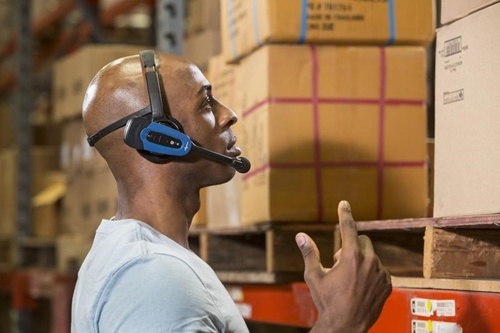
The image of a smoothly running warehouse may look like a highly standardized, efficient environment. People are taking the optimal route to get to assets. Vehicles are moving safely around the facility carrying pallets and heavy items. Every action has a purpose, and each activity is coordinated relative to everything else that is going on.
Achieving this outwardly pleasant vision depends on wrangling a great deal of chaos that is going on behind the scenes.
With so many moving parts without and within the warehouse, careful data coordination plays a critical role in everyday operations. One wrong barcode can lead to valuable goods getting lost. One warehouse in your network not following your data entry procedures can leave everybody else scrambling to adjust to the alternative methods. One distracted employee trying to do too much at once can leave you with a safety incident that puts people at risk and creates fiscal and legal headaches.
All things considered, it’s a marvel that any warehouse looks efficient, and the reality is that a lot of technology goes into bringing any sort of order out of extremely complex supply chain operations. Three vital tools that work in the background to ensure modern warehouses run smoothly are:
1. Remote Warehouse Management
Automated data collection is an instrumental tool for warehouse operators trying to keep track of shipments, share status updates across departments and ensure all operations run smoothly from start to finish. However, collecting data and moving it between mobile warehouse systems and enterprise resource planning platforms becomes incredibly difficult within geographically diverse warehouse systems. This is especially true if warehouses must be located in particularly remote or hard-to-access locations.
Specialized remote warehouse management systems will use data replication capabilities to ensure warehouse and ERP systems are sharing data with one another even when network access is spotty. This functionality ensures that users always have the data they need to get the job done and can easily get updates out to external stakeholders to keep every facet of the business on top of what is going on in the warehouse.
2. Voice Picking
Solutions like the Amazon Echo have been gaining prominence in homes around the world as the ability to trigger activity commands by speaking is almost always easier than grabbing a remote control, writing something down or pushing buttons. This same functionality applies to the warehouse, and it can provide a huge efficiency boost to employees as they work to minimize the time it takes to retrieve goods.
Voice picking frees your employees to bring the same convenience to the warehouse. By reading item labels and having the system record activities, employees use vocal commands to log the tasks they perform within your systems. This leaves their hands free to focus on actually handling parcels instead of trying to balance boxes, barcode readers, clipboards and similar items, improving safety and allowing workers to focus on the primary task that they are working on.
Voice picking increases picking speed since workers don’t need to pick up and put down hand-held scanning devices. It also improves safety since it allows workers to do their job in an eyes-free, hands-free manner.
3. Wireless Barcode Scanning
Barcode software that can integrate any type of wireless and mobile scanning device with your ERP or back-end business systems can be used to scan barcodes on the fly while workers are out in the field or on the warehouse floor. Serialization is among the most vital components of a warehouse. Accurate, consistent barcode processes are the lifeblood of asset and lot tracking, and even the smallest error or shortcut can undermine your system. Giving employees the ability to print and scan barcode labels as needed ensures they have what is necessary to follow best practices at all times and create new solutions in the event of a packaging error or similar problem.
What’s more, leading barcode label systems will allow users to print generic barcodes and attach product data to them down the line so they are always ready for whatever situation comes their way.
Bringing Order From Chaos
The systems behind the average warehouse are a complex web of interdepartmental stakeholders, disparate data systems, specialized technologies and diverse locations. Bringing all of these complexities together is a Herculean task, but innovation across the sector has made advanced technologies more accessible than ever. Mobile-enabled systems that may have seemed limited to large warehouses are now available for smaller organizations, and gains in the ERP and warehouse management sector are making advanced software and applications more affordable all the time.
Organizations working to achieve an ambitious vision for their warehouses can benefit substantially if they begin by looking at the behind-the-scenes technologies that keep operations running smoothly.






